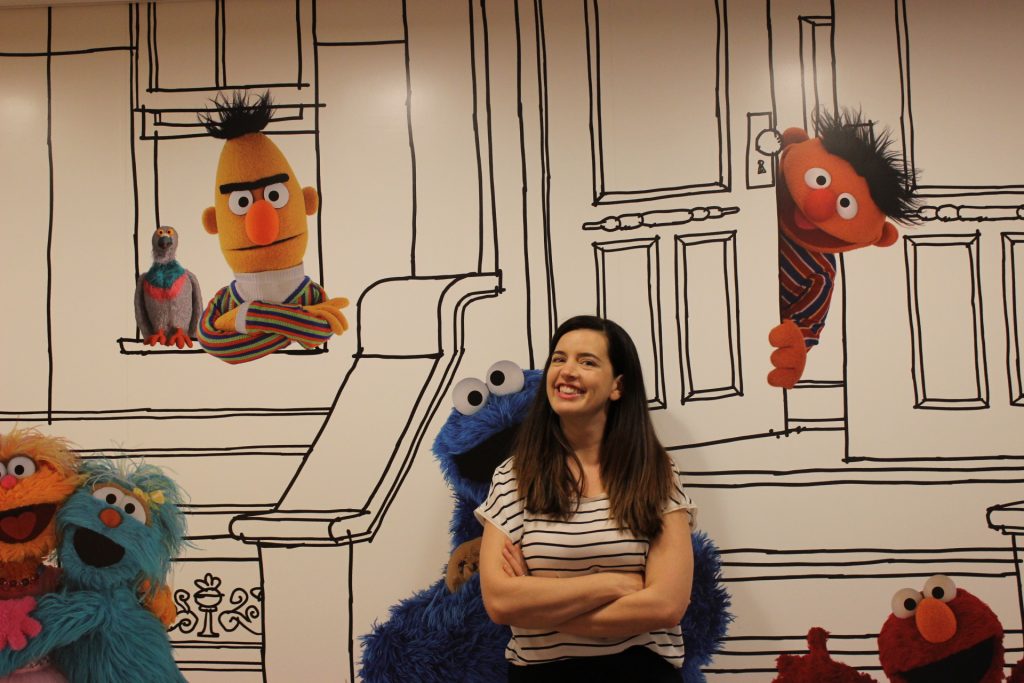Discussion Questions for Sesame Street: How Do You Talk to Kids About Hard Things?
Click here to listen to Kate’s conversation with Sherrie Westin of the Sesame Workshop.
1. “Yeah, but what do I tell my kids?” Kate begins this episode with a question she gets a lot, a question that gets at how to prepare our kids for a world that we can’t always protect them from. When, if ever, have you had to share bad news with young ones? What did you say (or not say)?
2. Sherrie Westin helps teach kids and their adults how to have hard conversations as the President of Global Impact and Philanthropy at the Sesame Workshop. Did you grow up watching Sesame Street—or another television show that empowered you to be smarter, stronger, and kinder? What do you remember about its impact?
3. Fifty years ago, Sesame Street was the first television show to focus on educating young children, alongside a caring adult. This paired learning is especially important for children who are experiencing trauma. How did the presence or absence of a caring adult shape your early education?
4. Sesame Street was the first multi-racial cast on television, as well as one of the first programs to show a child using a wheelchair or with Down Syndrome. These characters help children with similar identities see themselves in a positive light, as well as help other children see what they have in common across differences. In what cast or character have you—or your child—felt the most mirrored? What changed for you or them? What kinds of characters do you want to see more of in children’s media?
5. When Sesame Street began in South Africa, 1 in 7 children were affected by HIV and AIDS, leading the programmers to create the first ever HIV-positive Muppet named Kami. Sherrie reflects, “I am absolutely convinced that Kami saved lives because if you can’t break down the stigma surrounding an issue like HIV and AIDS, then you can’t begin to break down the culture of silence.” What is a taboo issue in your family or community? What creative education do you think is most needed now?
6. “If you don’t give people the words to use to describe their situation it’s one of the most isolating things in the world,” Kate says. One of Sherrie’s initiatives in the Middle East seeks to address this sense of isolation by teaching refugee children and their new neighbors tools to express their emotions. When have you experienced a failure of language? What couldn’t you say? What tools helped you to say it? What tools help the kids in your life to give voice to big feelings?
7. Attitudes on gender equity changed among viewers in Afghanistan when a female character on the local version of Sesame Street was shown proudly wearing her school uniform, going to school, and playing sports. What can you learn from this gentle approach to societal change?
8. When the actor who played Mr. Hooper died, Sesame Street programmers decided to address it head on. What struck you about the clip played of Big Bird processing the death of his friend on-air? How is death talked about (or not) in your family?
9. Sherrie says that the most important thing is to be both honest and reassuring when giving kids bad news. How do you strike a balance between being truthful and age-appropriate with the children in your life?
10. As a parent, your body is a kind of home, Kate says, a comfy, cozy space where your kids should be able to find love. What’s one small way you can provide a better home for a child in your life to learn and grow?
Bonus: After listening to this week’s podcast, what part of Kate and Sherrie’s conversation resonated with you most? What insight will you carry with you?
Discussion Questions written by author, editor, and facilitator Erin S. Lane.
Subscribe to Everything Happens wherever you listen to podcasts.



